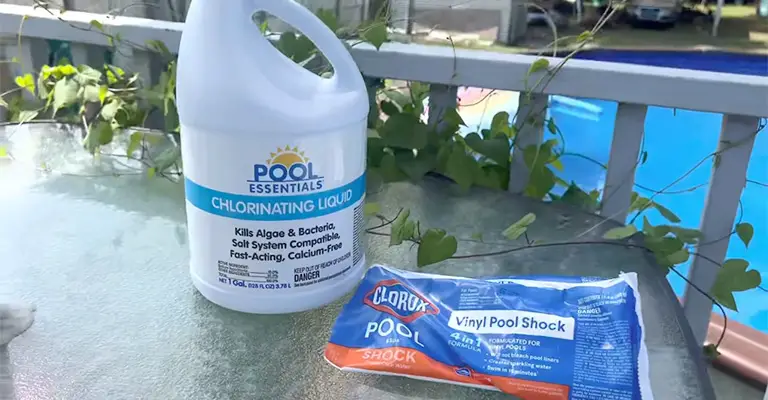Maintaining a sparkling, crystal-clear pool is a top priority for every pool owner. Regularly adding shock treatment to your pool is crucial in maintaining optimal water quality.
However, determining the right amount of shock to add can be a daunting task. You may find yourself asking, “How many shocks should I add to my pool?”
In addition to the size of your pool, the type of shock you are using, and whether you’re shocking as part of regular pool maintenance or treating an algae issue, the amount you need to add depends on these factors.
This Is How Much Shock Should You Add to Your Pool
You should add one pound of shock per 10,000 gallons of water to your pool for general maintenance.
Black Green (black algae and extreme growth): Four times, shock your pool and add three pounds of shock per 10,000 gallons.
Darker Green (significant algae growth): Shock your pool three times with three pounds of shock.
Light Green or Teal Green Pool Water (early-stage algae): Shock your pool twice every 10,000 gallons with two pounds of shock per 10,000 gallons.
It is the most effective method of eradicating algae from your pool to shock it with a concentrated amount of chlorine. On the other hand, the results of an algaecide are better at preventing algae from growing.
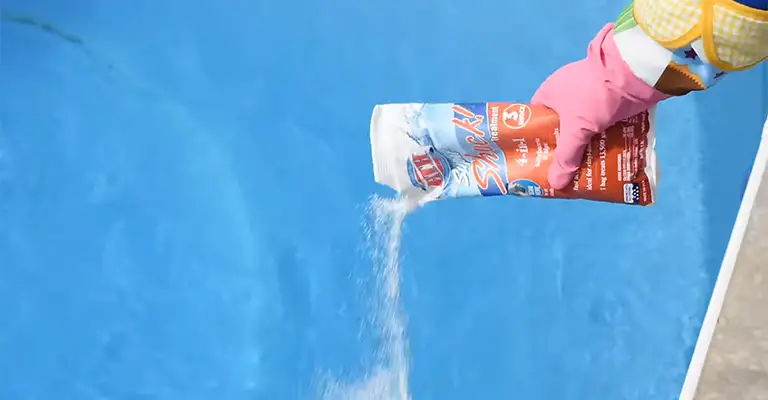
When you have an algae problem, however, you will have to double, triple, or quadruple the shock.
Always follow the instructions on the manufacturer’s packaging when adding pool chemicals.
You must achieve breakpoint chlorination to eliminate algae, contaminants, and chloramines from water. When chlorine levels reach 30 parts per million, it’s considered to be breakpoint chlorination.
Water with high pH levels, high CYA levels, or high temperatures will require a higher chlorine concentration, and it may take longer to remove all the algae, bacteria, and contaminants.
To ensure your pool gets enough chlorine, round up the calculations when calculating how much shock to add.
When your chlorine level is out of balance and your sanitizer needs to be refreshed, you should add shock.
By shocking your pool, you will increase the chlorine available to your swimming pool and decrease the combined chlorine available to your swimming pool.
Combined Chlorine (Chloramines): The concentration of chlorine in water that has reacted with microorganisms. The level should not exceed 0.2 parts per million.
Free Available Chlorine: Chlorine that is available to kill bacteria and contaminants in water. The level should be between 1 and 3 parts per million.
Can You Shock 2 Days In A Row? Is It Too Much?
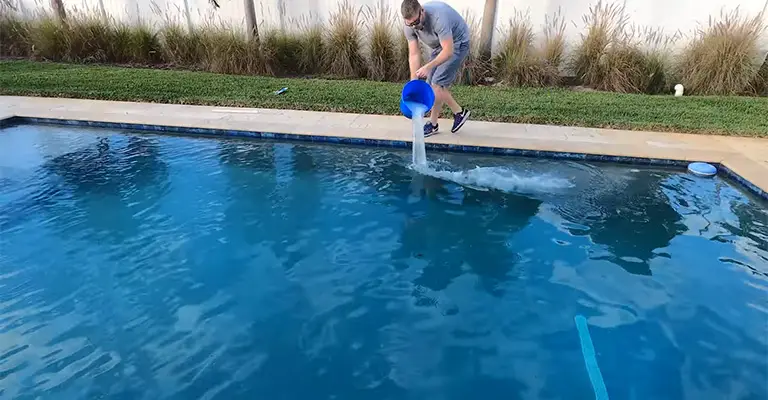
Shocking your pool for two consecutive days to kill algae is safe and recommended. Interestingly, algae return quickly when chlorine levels are not high enough for long enough to kill them off.
It may be necessary to shock your pool and maintain a high chlorine level of 15 to 30 ppm for several days, depending on the severity of your algae outbreak. The seriousness of algae growth can be classified into three categories.
- Black green algae
- Dark green algae
- Light green algae
Can You Add Too Much Shock To A Pool?
You can add too much shock, yes. Having a small pool can also lead to much slower chlorine levels.
Check your pH and chlorine levels afterwards, and do not let the pool be used until the chlorine level has dropped back down to 3 ppm. If you add too much shock to your pool, you will disturb its chemical balance.
Regardless of whether you overstocked the pool or not, that will happen. You will either notice an increase in pH or a decrease depending on which product you use. Similarly, you won’t be able to use the pool for a few days.
Is Too Much Shock Bad for Pool Equipment or Pool Plaster/Walls?
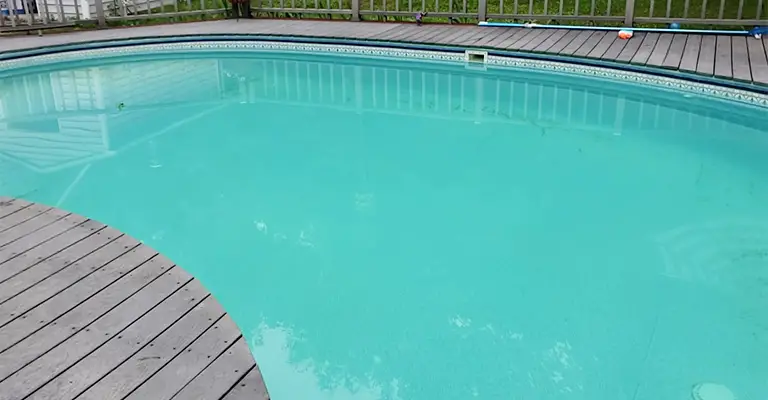
Generally, too much shock does not harm a pool in the short term. Though doing this regularly could cause damage to the pool equipment, you shouldn’t do it frequently.
As a result of the shock, pool chlorine levels will go up significantly, and pH levels may fluctuate considerably.
Having an incorrect pH will lead to chlorine not working as effectively, which in turn can lead to algae growth.
It’s also not suitable for the pool equipment to have an unbalanced pH.
- Pool equipment corrodes due to low pH
- In high pH systems, scale buildup can occur on equipment and pool walls
pH-reducing products like muriatic acid or sodium bisulfate can help fix high pH. Additional calcium can also be added to the water if too much shock is used.
You can only experience this if your shock consists of calcium hypochlorite. Chlorine of this type will add calcium to the water. The problem will not arise with liquid chlorine.
You may want to reduce the calcium in your pool if you already have soft water, that is, water with higher calcium hardness levels.
A high calcium level in the water will cause scale and calcium buildup on equipment. Additionally, you may observe a white accumulation on your pool tiles’ waterline- calcium buildup.
A lower calcium level is a bit more challenging to achieve than an adjustment in pH level. It may be necessary to drain some of the water from your pool and refill it with a hose filter to prevent calcium from entering.
We call this dilution when water is removed from the mixture. In the process of diluting high-calcium water with low-calcium water, you drain some of the high-calcium water out.
Can I Use Bleach Or Liquid Chlorine To Shock My Pool?
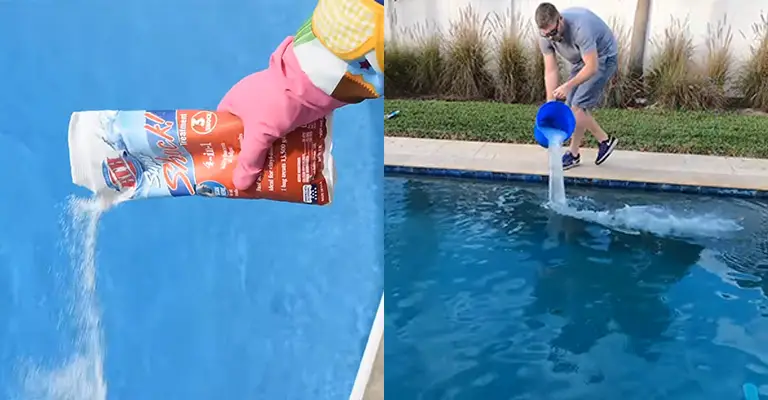
A lot of pool owners use bleach or liquid shock in their pools. In commercial grade, sodium hypochlorite, aka liquid shock, is a liquid chlorine with a high concentration.
This bleach contains 12.5 per cent sodium hypochlorite, making it stronger than store-bought bleach. The sodium hypochlorite in household bleach for use in one-gallon jugs is less than 5 per cent.
You will need to add significantly more bleach than you would with traditional pool shock if you are using bleach to shock your pool.
Does Shocking A Pool Raise The pH Levels?
You will experience a slight pH increase with a cal-hypo shock. Your pH will not be affected by a non-chlorine shock.
Should I Shock My Pool Every Week?
Weekly shocks are part of regular maintenance for your pool. This aims to keep contaminants out of the water and keep algae from growing in it.
A shock is also recommended after it has rained heavily or if there were many people in the pool during a pool party.
How Long Does It Take Pool Shock To Work?
For pool shock to kill algae, it needs to work for 12 to 24 hours. The best time to swim again is eight hours after shocking.
Once you’ve finished treating your water, check it again 24 hours later. Generally, your chlorine levels are safe for swimming once they reach normal ranges.
How Long Should You Run The Filter After Shocking A Pool?
The pool filter and pool pump should be run for at least six hours after your pool is shocked. In addition, it allows the shock to circulate within the water for a full period, so the filter has ample time to clean the water.
Your filter should be run for 24 hours to a whole week following shocking if you have algae problems.
How Many Bags Of Shock Do I Need For A 10,000-Gallon Pool?
You need to check the shock type and the size of the bag before you use it. In your package directions, you’ll find information on how much to use based on the volume of your pool. Using more will help you clear up algae.
Final Words
Allow between one and four days to make the pool swimmable again after adding shock. It is highly recommended that the chlorine levels return to an acceptable range of 3-5 parts per million (ppm) before swimming.
It depends on how much stabilizer is in your pool, how much sunlight your pool receives, and how much organic matter is present.
By removing your swimming pool cover, you can expedite the process. It will ensure that the pool receives sunlight’s UV rays.
Restoring the pH level and keeping the water clear is also crucial. Then you can safely swim in your pool once you’ve completed all this.

